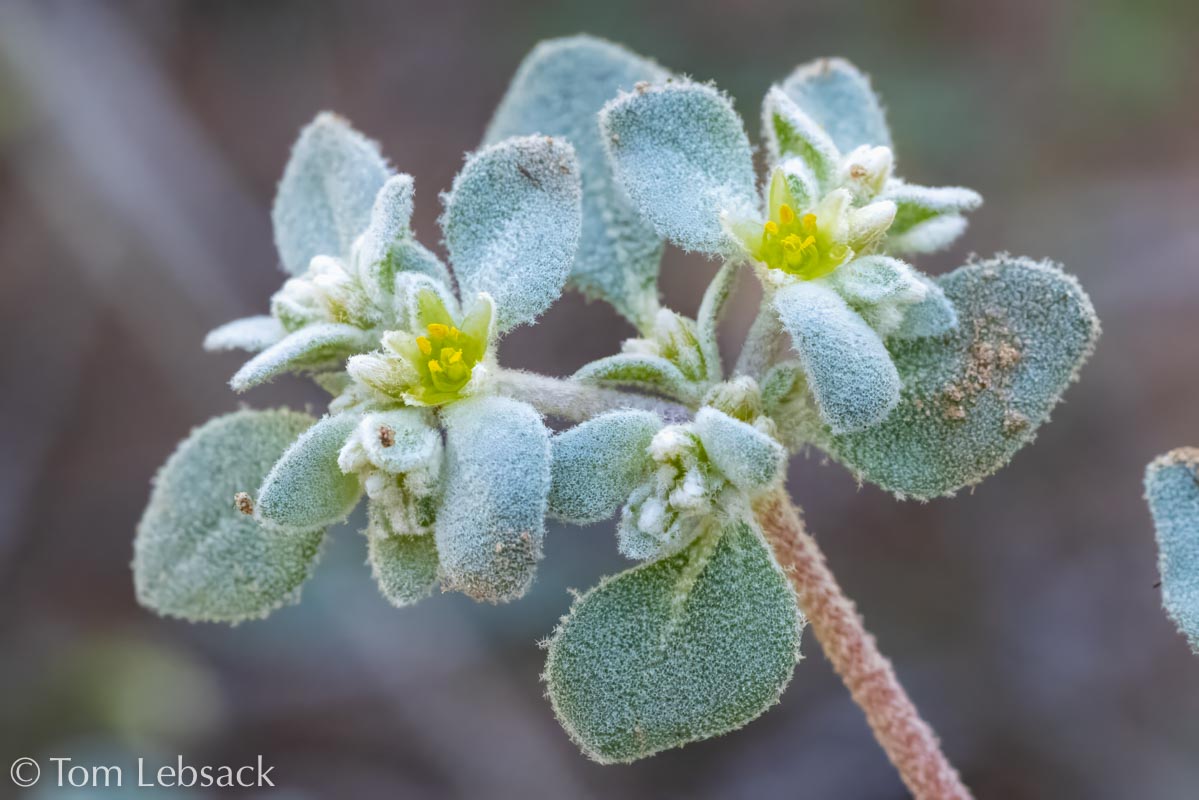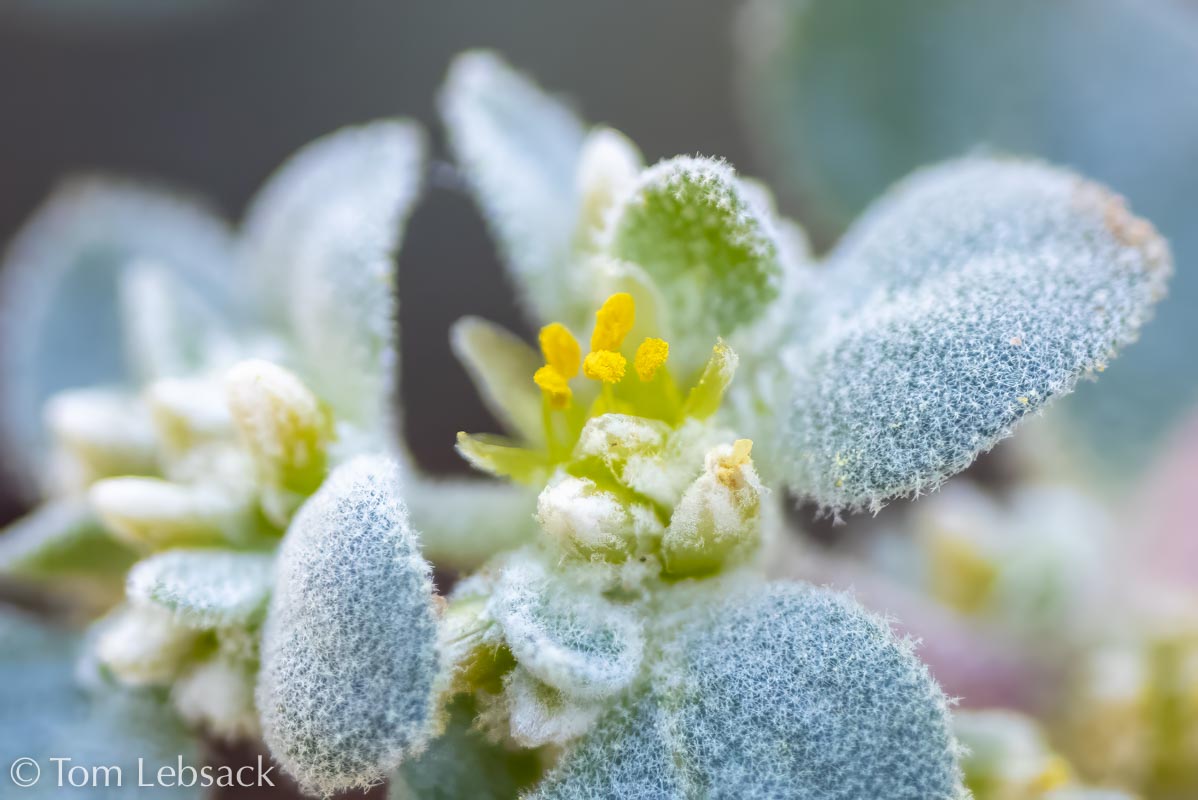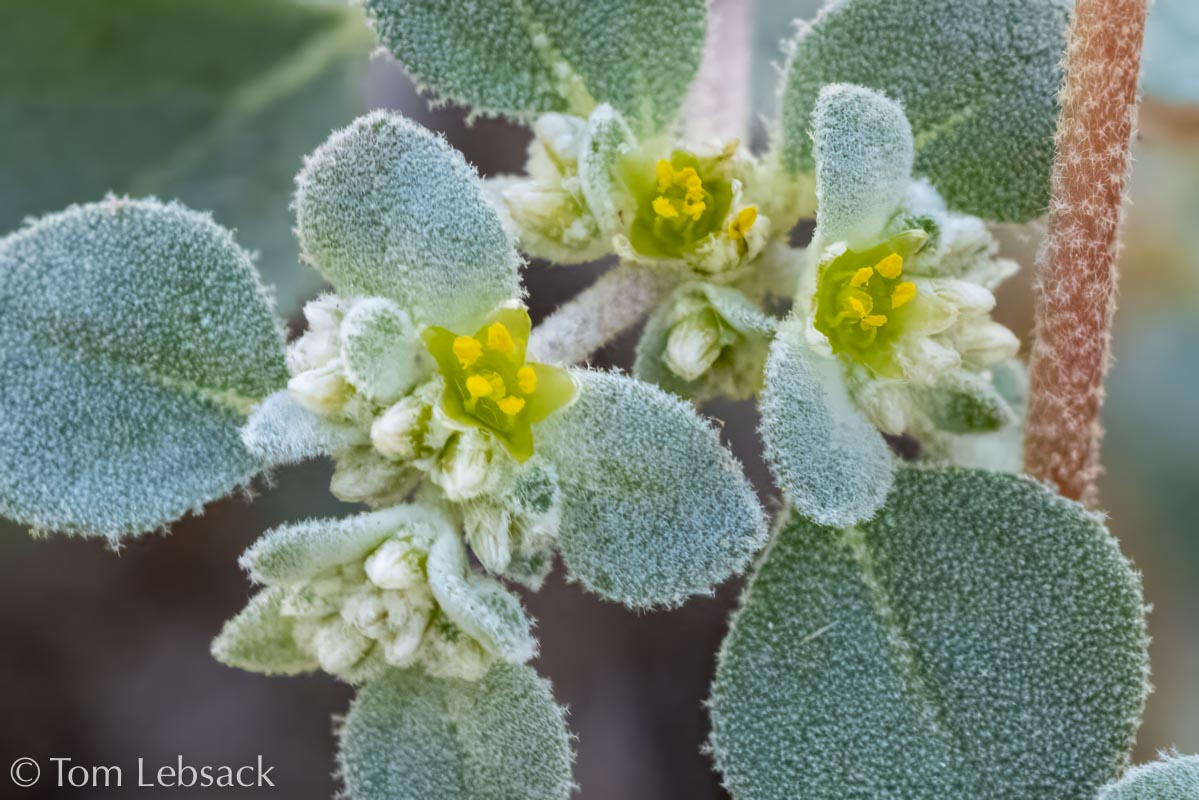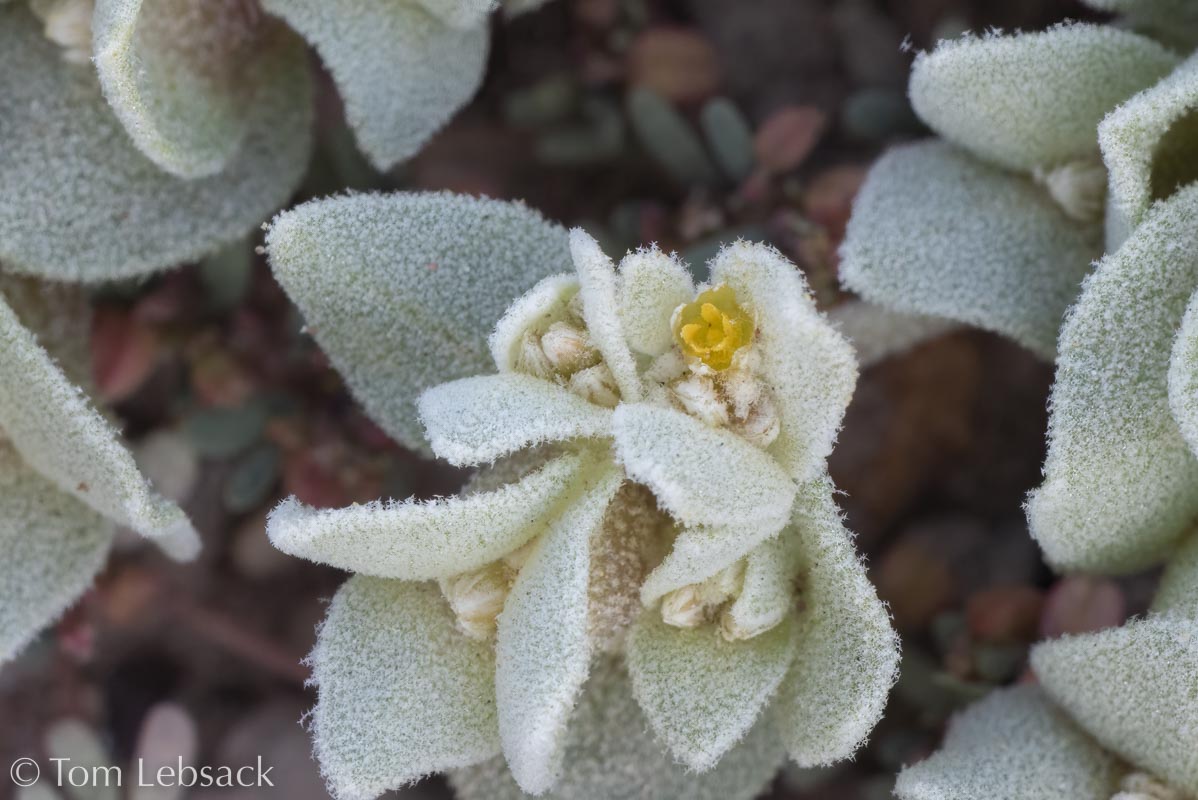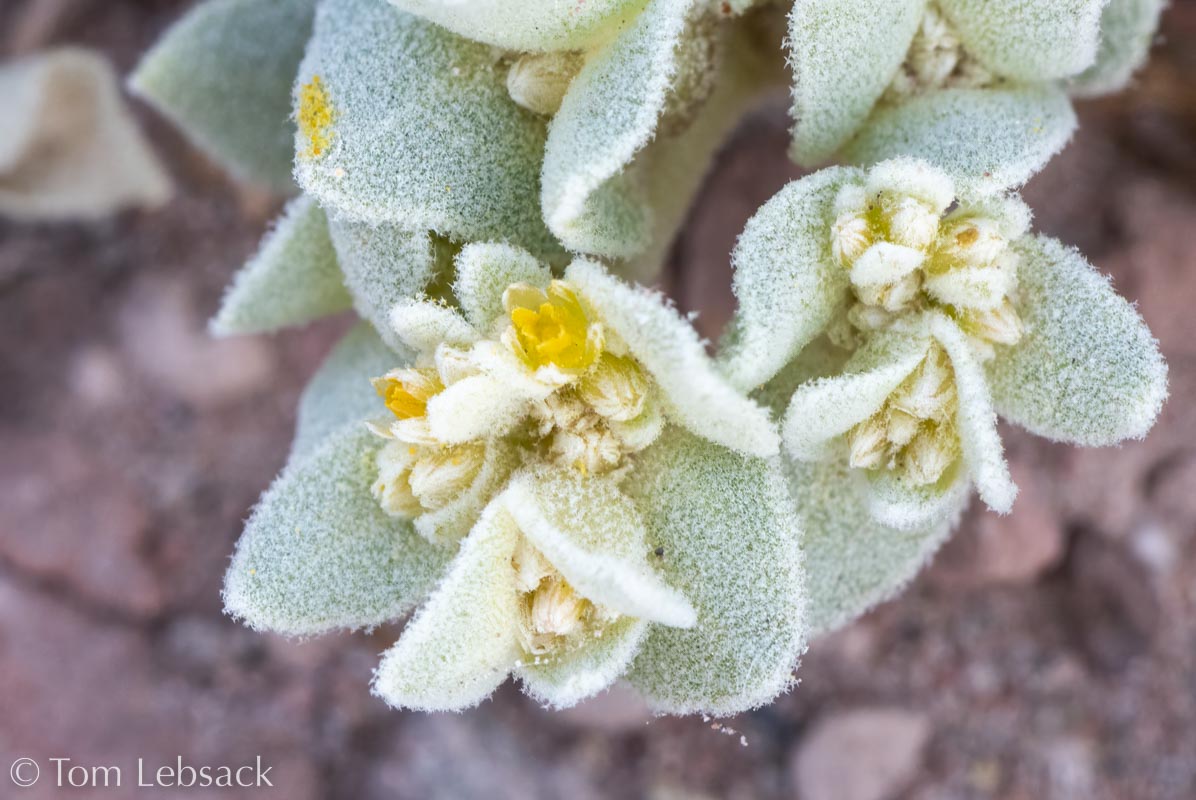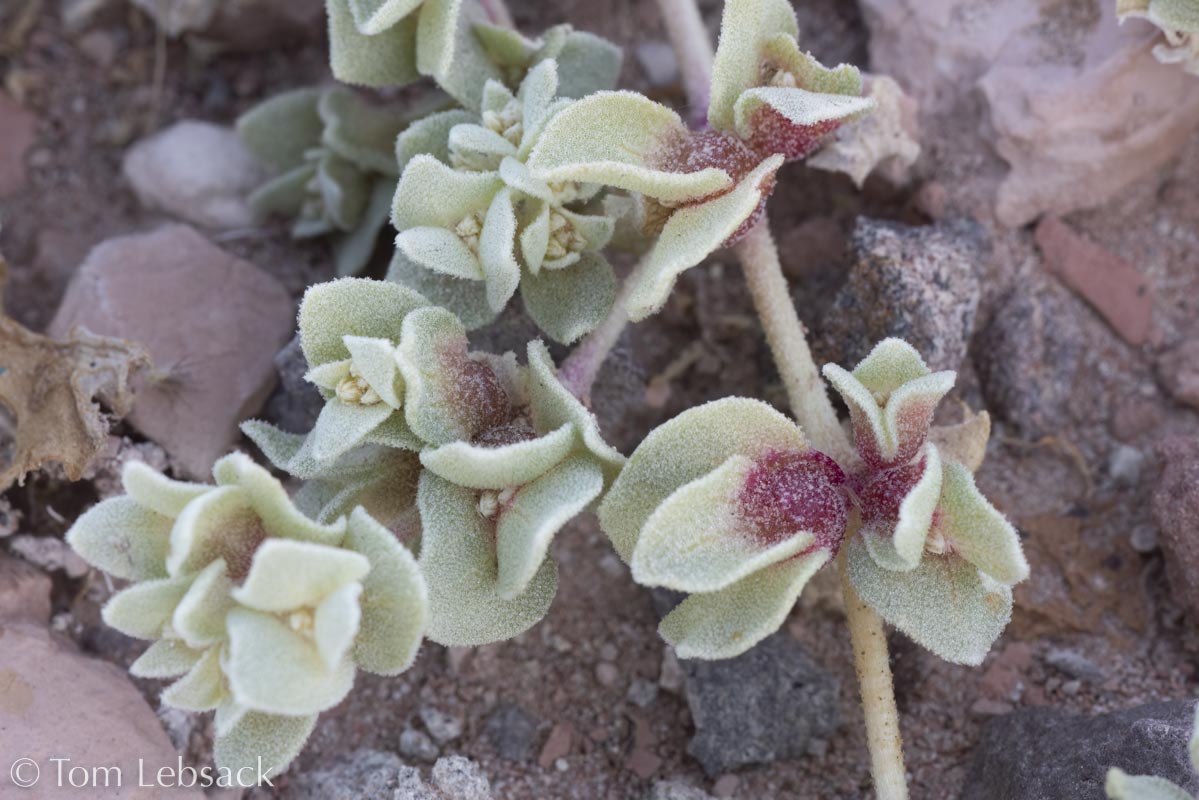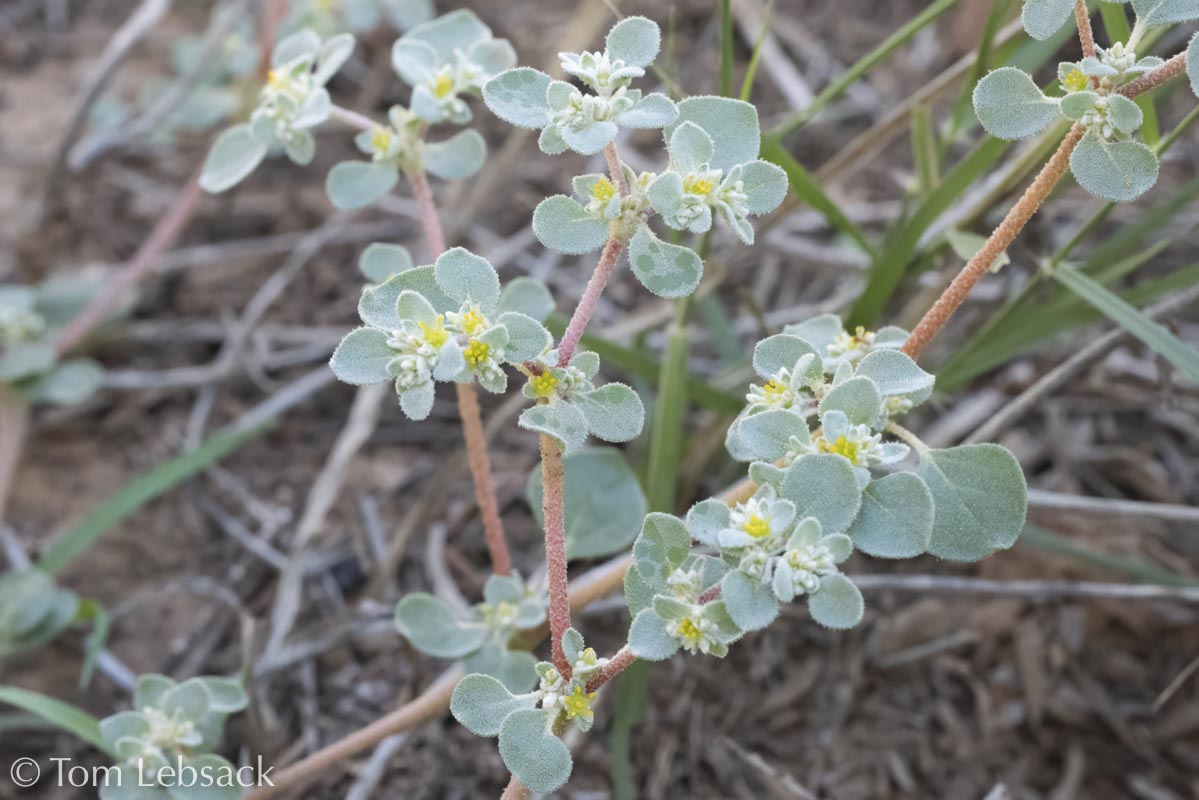Texas Wildbuds
Tidestromia lanuginosa
(Woolly Tidestromia)
| Scientific Name | Tidestromia lanuginosa | USDA PLANTS Symbol | TILA2 |
| Common Name | Woolly Tidestromia, Honeymat | ITIS Taxonomic Serial No. | 20834 |
| Family | Amaranthaceae (Amaranth) | SEINet Reference |
Click Here |
| Description | Habitat: Various soil types (limestone-sandy, gypseous, volcanic, etc.) in woodlands, desert scrub, grasslands, coastal dunes, beaches, disturbed areas and roadsides; 0 to 6900 ft. Plant: Prostrate or ascending annual, stems branching from base, repeately forked and up to 24 inches long; young stems are yellowish with minute pubescent hairs, becoming dull red dull and smooth with age. Leaves: Mostly opposite, ovate-orbicular to lanceolate 3/8 to 1-1/4 inches long; lower leaves on petioles up to 1 inch long; surfaces are densely covered with pubescent hairs. Inflorescence: Tiny, inconspicuous flowers less than 1/16 to almost 1/8-inch long subtended by small leaves and clustered in leaf axils; tepals are yellow and there are 5 stamens and a 2-lobed stigma. Bloom Period: August to October. References: Southwest Desert Flora, SEINet and Tidestromia lanuginosa var. laniginosa in "Manual of the Vascular Plants of Texas" by Correll and Johnston. |
BONAP Distribution Map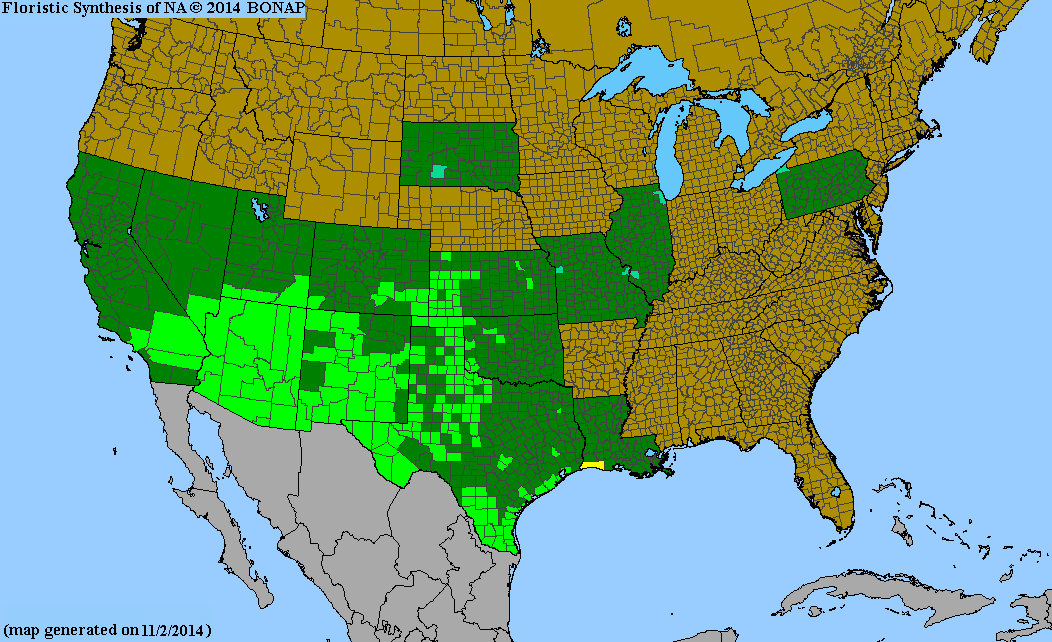 Map Color Key Map Color Key |
Texas Status: Native |
Banner photo of Castilleja indivisa and Lupinus ssp. taken along FM 1323 north of Johnson City, Blanco County
© Tom Lebsack 2025
Every attempt is made to provide accurate, up-to-date, and relevant information, but the completeness or accuracy of any information presented on this website cannot be guaranteed. I use authoritative references to insure high standards of accuracy and review and update the information frequently.
